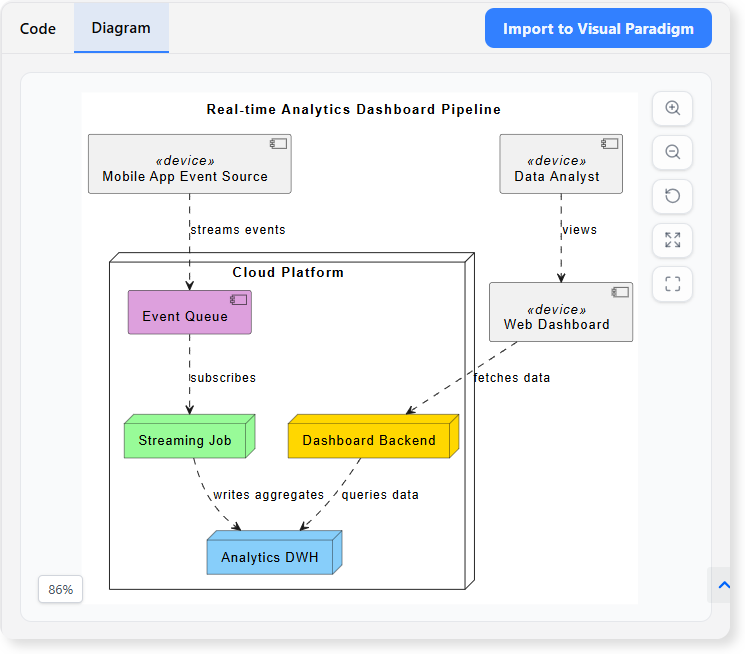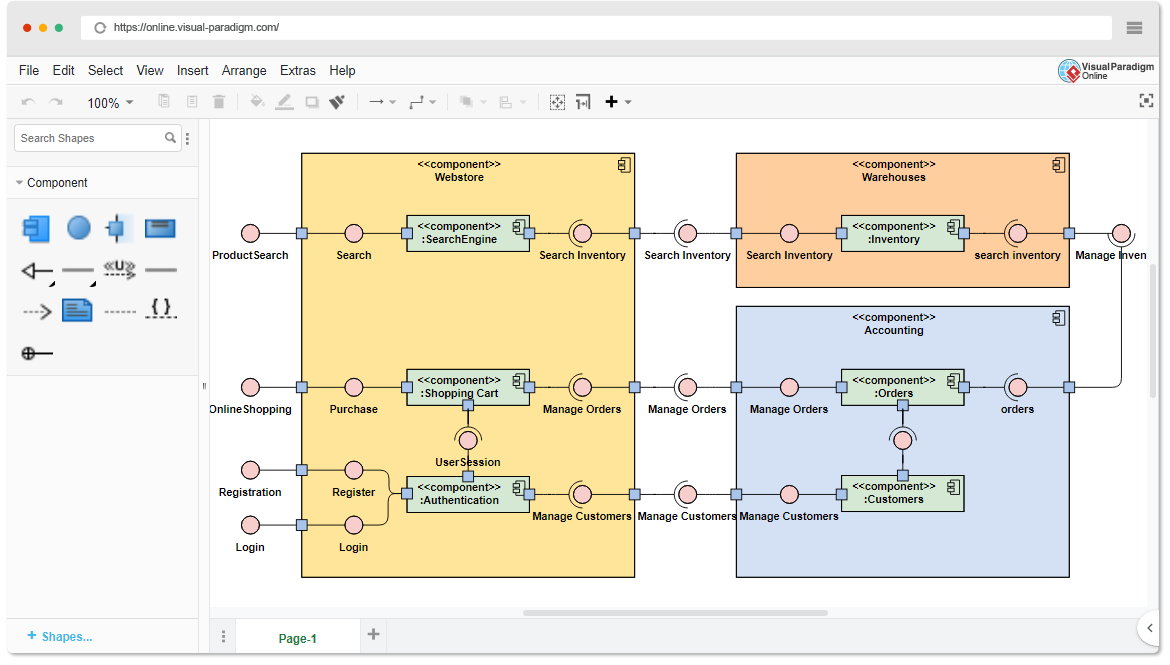Now Reading: PlantUML Deployment Diagram vs Component Diagram: When to Use Each
-
01
PlantUML Deployment Diagram vs Component Diagram: When to Use Each
PlantUML Deployment Diagram vs Component Diagram: When to Use Each
In software architecture, different UML diagrams serve different purposes. Two of the most commonly used are deployment diagrams and component diagrams. While they may look similar at first glance, each provides unique insights. Understanding when to use each helps you document systems more effectively and communicate the right details to your audience.
What Is a Deployment Diagram?

A deployment diagram shows the physical runtime environment of a system:
- Nodes such as servers, devices, or cloud instances.
- How software components are deployed onto these nodes.
- Communication paths between hardware and software elements.
Use it when you want to answer questions like:
- Where does each part of the system run?
- How do different servers and devices connect?
- What infrastructure is needed to support the software?
What Is a Component Diagram?

A component diagram focuses on the logical structure of the system’s software:
- Components, libraries, and services that make up the application.
- Interfaces and dependencies between those components.
- How modules interact to deliver functionality.
Use it when you want to answer questions like:
- What are the main building blocks of the system?
- How do modules depend on each other?
- Which interfaces are exposed to other parts of the system?
Key Differences
Deployment Diagram
Focus: Physical infrastructure and runtime nodes
Shows: Servers, devices, containers, communication
Best for: Explaining infrastructure and runtime setup
Audience: DevOps engineers, system architects
Component Diagram
Focus: Logical software structure
Shows: Components, libraries, interfaces
Best For: Explaining software architecture design
Audience: Developers, architects, designers
When to Use Each
Deployment Diagram
Best for infrastructure planning, DevOps workflows, cloud architecture, and explaining runtime environments.
Component Diagram
Best for system design, module breakdown, API design, and showing internal structure of applications.
Together
In many cases, both diagrams complement each other. A component diagram explains the logic, while a deployment diagram shows where those components live in the real world.
Conclusion
Deployment diagrams and component diagrams serve different but complementary purposes in UML modeling. Use component diagrams to capture the software’s internal structure, and deployment diagrams to show where that software runs in the real world. Together, they give a complete picture of your system architecture.

